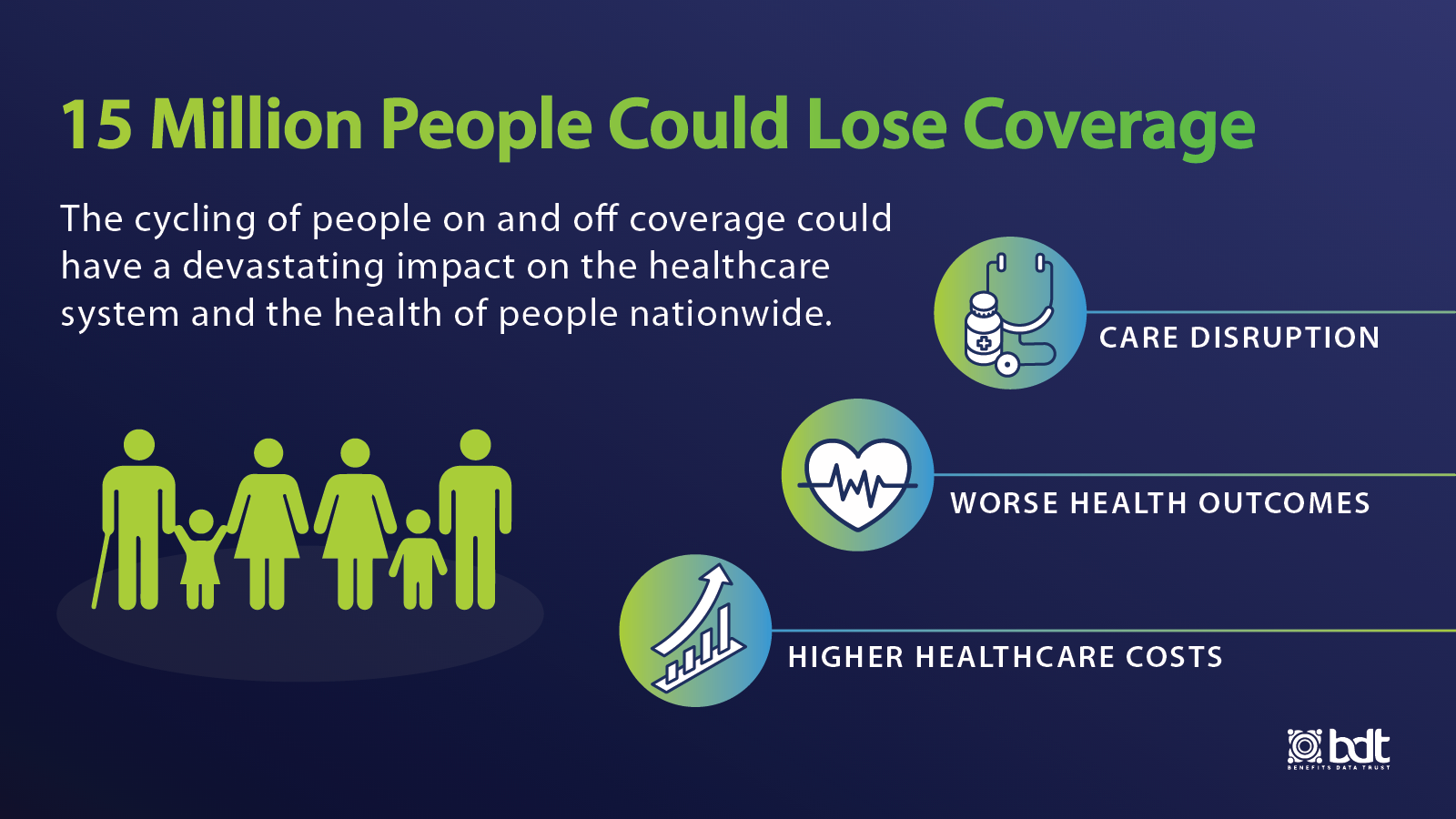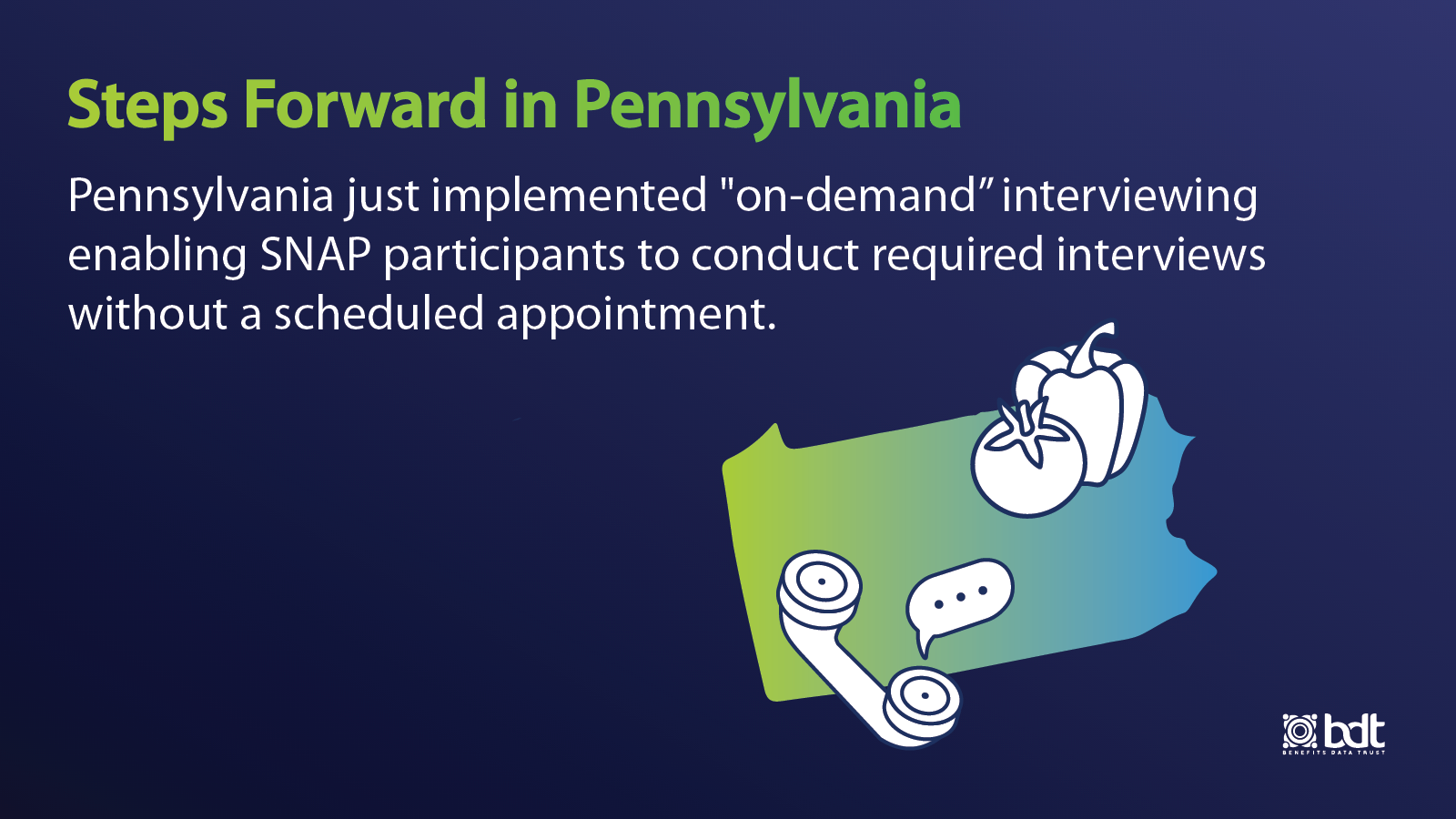The COVID-19 pandemic exposed the financial precarity of many Americans, laying bare the need for food, medical care, and other assistance, including for many who viewed themselves as comfortably middle class. In response, federal and state government agencies temporarily expanded and modified many programs, including Medicaid, SNAP, and WIC, providing critical assistance to families nationwide. When the federal COVID-19 “public health emergency” declaration ends, many of these changes are also set to expire, with the potential for millions of people to lose health insurance, food assistance, and more. For example, during the pandemic it has been much easier to stay enrolled in Medicaid, and SNAP benefit amounts have increased.
While we do not know when the declaration will end, many states are working hard to prepare for it with the goal of modernizing benefits access rather than returning to pre-pandemic practices. The hope is to close rather than widen economic and racial disparities by preserving health coverage and program improvements that reduce barriers to access. At the same time, states are grappling with severe staffing shortages, outdated technology, and even a national shortage of paper needed to help communicate program changes.
Below are some of the steps states are taking and how BDT is helping.
MEDICAID
Medicaid, the nation’s largest health insurance provider, and CHIP together currently serve over 80 million people. Under the Families First Coronavirus Response Act, in exchange for increased federal funding, states are not permitted to remove most Medicaid beneficiaries from coverage for the duration of the public health emergency. However, when it ends, more than 15 million may lose their eligibility. And without careful state actions, millions more who will remain eligible for Medicaid could also lose coverage unnecessarily due to missed paperwork or administrative barriers.

Medicaid churn was a significant issue prior to the pandemic and could become an even bigger problem when the emergency declaration ends, with potentially devastating impacts on the healthcare system and people’s health. The federal Centers for Medicare and Medicaid Services (CMS) has released guidance to support states as they plan for the resumption of normal eligibility and enrollment operations. For example, several states are engaging community partners in planned outreach efforts and working with Medicaid managed care organizations (MCOs) to update enrollee contact information.
With support from the Robert Wood Johnson Foundation, BDT has created a Medicaid Churn Toolkit for states to prepare for the end of the public health emergency and prevent churn. Now, with the Foundation’s continued support, BDT is offering state Medicaid agencies the opportunity to participate in a 12-month learning collaborative and receive individually tailored technical assistance. To learn more about the learning collaborative, read our FAQ blog.
States interested in participating in this opportunity should complete a short expression of interest form by April 15, 2022.
SNAP
In response to the pandemic, Congress, the U.S. Department of Agriculture, and states took steps to expand access to SNAP, make it easier to apply, and increase benefit levels. Evidence suggests that the more robust SNAP benefits mitigated the effects of the pandemic on food insecurity. However, without additional actions, when the public health emergency ends, SNAP benefit levels will decrease for many, SNAP work requirements will be back in force, and many will face more burdensome processes to apply or recertify for SNAP.

The good news is that states have options to ease the transition, including helping individuals increase benefits by maximizing deductions, waiving out-of-work requirement rules, and improving application processes. In fact, many states use telephonic application processes that do not require public health emergency authority to ease applications and recertifications, and 29 states currently have state-wide work requirement waivers. Notably, Pennsylvania just implemented “on-demand” interviews, enabling SNAP participants to conduct required interviews without a scheduled appointment. This change, implemented under a federal waiver with support from many organizations including BDT, reduced a major hurdle for the more than 2 million SNAP participants in Pennsylvania.
In partnership with states across the nation, BDT directly assists tens of thousands of households in accessing SNAP through data-driven outreach and phone-based application assistance, and BDT also helps families recertify for SNAP through two-way texting. BDT has also helped multiple states dramatically simplify SNAP applications for older Americans and people with disabilities through the federal Elderly Simplified Application Project (ESAP).
State and local agencies interested in learning how they can streamline SNAP can access our “Using Text Message Outreach to Reduce SNAP Churn” guidebook. This guidebook, created in partnership with the Beeck Center for Social Impact and Innovation, provides practical insights for developing a text messaging outreach program to support SNAP recertification.
WIC
More than 40% of eligible individuals miss out on WIC, and issues of access were exacerbated by the pandemic. Many states have taken advantage of federal flexibilities available during the public health emergency, including a waiver to help families enroll in WIC and fulfill program requirements remotely through telephone or video appointments, rather than having to come to a WIC office in-person.

BDT’s work with states in collaboration with the Center on Budget and Policy Priorities has demonstrated how scheduling and attending in-person appointments pose a major barrier for eligible families to enroll in WIC, with many families dropping off at each step in the process. This is an important equity issue, as in-person requirements disproportionately harm working parents, those with disabilities, those facing transportation barriers, and those in rural areas where a WIC clinic may be more than an hour away.
Advocates are pushing for Congress to make these flexibilities permanent so that families have more choice in the type of appointment that works best for them. In the meantime, to help more families enroll in WIC, states can conduct data-driven outreach to families who are eligible but not enrolled. BDT has worked with 12 states to pilot or adopt this practice, including Pennsylvania, Oklahoma, and Minnesota that institutionalized it in the last year, and recently published a toolkit to help all states identify WIC-eligible nonparticipants and make it easier to enroll.
BDT stands ready to assist state agencies in preparing for the end of the public health emergency declaration and in streamlining access through technical assistance, piloting and evaluating innovations, or providing direct assistance to residents. To learn more, contact partnerships@bdtrust.org.
